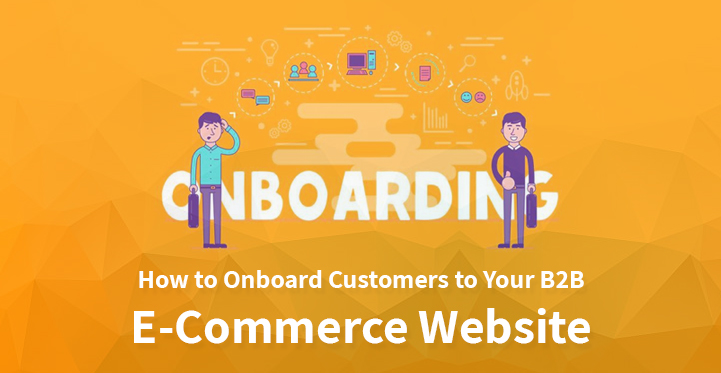B2B eCommerce Website
So you have managed to get your first B2B e-commerce website all set up? That’s fantastic but one of the growing pangs of any B2B ecommerce website is in being able to draw in customers.
Table of Contents
Let’s state the obvious – B2B e-commerce website is not for everyone, that’s a given. But since you have managed to get your first B2B e-commerce website all setup, it is time that you took a closer look at B2B e-commerce websites, so that you understand the process of onboarding customers better.
Customer on-boarding, a closer look:
Most customers when they land on your website would naturally check out various features of your website before they register interest in any of the products listed there.
This process of walk-through is generally termed customer onboarding, where you would be required to provide the customer with essential support and answer all their queries.
When it comes to online purchases, you need to be able to establish a certain amount of trust and credibility, without which, it can be quite hard to make any sale.
It is essential that you make the right first impression so that when it comes to your B2B e-commerce website, your prospective customers convert to actual customers.
Best strategies for successful customer onboarding:
These are some of the best strategies for successful customer onboarding; you may want to check out the same.
1. Offer trial period:
When it comes to your B2B e-commerce website, one of the most effective strategies for customer onboarding is to provide them with a trial offer.
The logic behind the same is that these prospective customers can use the trial period to ‘walk about’, familiarize themselves with your website, and in general, be able to check out all the features so that they can make an informed decision.
You may want to offer them an initial trial period of 10 days, and depending on their activity, extend the same to 60 days. This should help you boost the conversion rate for your website.
2. Show off your products:
One of the best ways to increase user engagement as well as boost the conversion rate on your B2B e-commerce website is to set up a demo of your product.
And even better, if you or someone else takes part in the demo, the chances of it impressing the customer go up higher.
You need to make sure that your customers are interested in the demo and that they can comprehend it, in action. This should help boost the conversion rate for your website as well.
3. Help your customers:
Do not assume that all your customers are equally net savvy and that there may be a few who are complete beginners and need all the guidance they can get to make sense of your website.
You may have to walk some of them around and explain in detail what your website is all about and why their company may require your services right away. You would, in short, be educating them and in the process, help create a new customer as well.
Read: 36+ Top Free eCommerce WordPress Themes With Demo Content 2021
4. Incentives:
This logic holds for any new product; and in this case, you have a brand new ecommerce platform and want to get more customers to start using the same. They have had their ‘walk-through’ and have also checked out various aspects of your website.
Now, all that is left is for them to make their first purchase on your website. And one of the best ways to get customers to go in for a purchase is to offer incentives.
You can test out several incentives and with the help of the specific plugin, see which one works better. Once you know which incentive offer seems to generate more interest, you may want to adopt the same for other products as well.
Just know that incentives do not necessarily mean discounted rates – it could be early access to new products, discounts that can be enchased only after 3 purchases and the list goes on.
5. Feedback:
Feedback is an important aspect of any website and not just an e-commerce website and not so many webmasters pay attention to the same with obvious results. You must take the feedback of all your customers seriously.
They may not like a particular design or would prefer that you redesign the whole product portfolio for convenience. Just remember that you must be able to help improve your user’s web experience.
And part of that process involves listening to them and acting on the same. If your customer feels that the pages of your website are loading slowly, then that means that you need to use specific plugins that can help increase the load speed of your web pages.
That’s just an example, but this should tell you that when it comes to feedback, all customer feedback needs to be taken seriously.
Client onboarding is not easy, it requires you to establish a certain degree of trust and credibility and you can then interact with new companies, and individuals and even form a new relationship in the process.
Granted that no one is going to develop the requisite trust and credibility in the space of an hour, rather the process is drawn out.
And once the client trusts in your website and the particular model then he would be more than likely to subscribe to your services.
This is why it is essential that you support all your first-time customers and offer them an end-to-end user experience where you walk them through the entire process and help explain what it is all about.
Only when a client is convinced, he would place an order – and remember, that the product/ service in question must be in demand as well.
And if you plan the process right from the start, you should end up with new customers and a stable relationship that you can always count on for new business.



